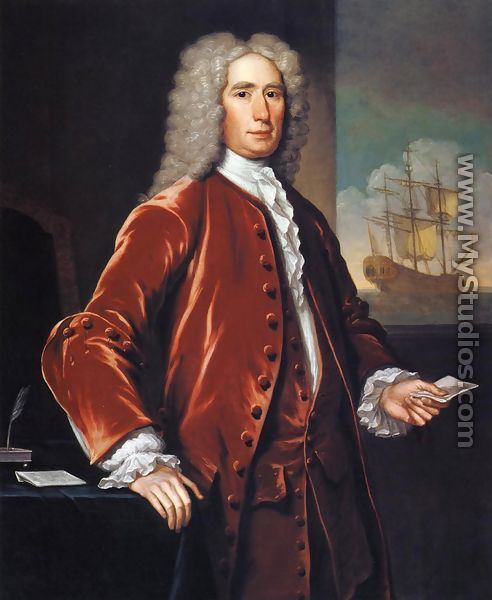Name Paul Mascarene | Spouse(s) Elizabeth Perry | |
 | ||
Full Name Jean-Paul Mascarene Allegiance Kingdom of Great Britain People also search for Francois du Pont Duvivier, Jean-Louis Le Loutre, William Tailer | ||
Siege of Annapolis Royal (1744)
Jean-Paul Mascarene (c. 1684 – 22 January 1760) was a Lieutenant-Governor of Nova Scotia and commander of the 40th Regiment of Foot from 1740 to 1749. During this time, he led the colony through King George's War. He had an extensive military career throughout his life, during the events of British and French conflict that led to the Seven Years' War (the North American theater is known as the French and Indian War).
Contents

Biography
Mascarene was of French birth of a Huguenot family, driven from France at the revocation of the edict of Nantes in 1685. Subsequently, Mascarene was cared for by relatives in Geneva where he was raised and received his education.
About 1706 he moved to England where he received an ensigncy in the Regiment of French Foot. He was stationed at Portsmouth in 1708 where he was commissioned a lieutenant. By “having the advantage of the French language”, the Governor of Nova Scotia, Samuel Vetch took an interest in Mascarene to use him in relations with French speaking inhabitants of his territory. In 1711, Mascarene was posted at Boston, Massachusetts, where he met and married Elizabeth Perry, by whom he would have four children. In August 1714, Vetch sent Mascarene and Captain Joseph Bennett, with a detachment of troops to Minas, located in the Grand-Pré region of Nova Scotia, Canada. Mascarene’s orders were to be courteous but to collect a tribute worth 6,000 livres from the Acadian inhabitants. Vetch appointed him with a committee, to hear and settle disputes between the Acadians. During the next five years, Mascarene divided his time between Boston and Placentia, Newfoundland, where he was in charge of an infantry company.
By August 1717, he was commissioned a captain in the newly formed 40th Regiment of Foot and put in charge of a grenadier company. When Port Royal, Nova Scotia was surrendered in October, he “had the honour to take possession of it in mounting the first guard.” Whether by formal education or breadth of interests, he was considered an engineer as well as a regular officer and artilleryman, and a visit to England during this period resulted in his appointment as engineer to the Board of Ordnance. By 1719, he was back in Boston preparing to embark for Annapolis with orders to report on the state of the fortifications there.
He was commissioned Lieutenant-Governor of Nova Scotia in 1740, until he was replaced by Edward Cornwallis in 1749. In 1751, the new governor, Cornwallis, sent Mascarene to New England to renew the 1726 treaty with the eastern Indians (Norridgewocks, Penobscots, Malecites), and although he corresponded with his Annapolis friends for several years, he did not return to Nova Scotia.
In the course of service, he rose to the rank of Major-General. He died poor having only half the pay of his lieutenant-colonelcy to sustain his remaining days in Boston. Nonetheless, he was content with his family of whom he expressed “thanks to Almighty God [to be] in my own house amongst my Children and . . . grandchildren.” (Two of his grandchildren, Hon Foster Hutchinson and William Handfield Snelling, both buried in the Old Burying Ground.)
One of his direct descendants is American actor James Spader.
